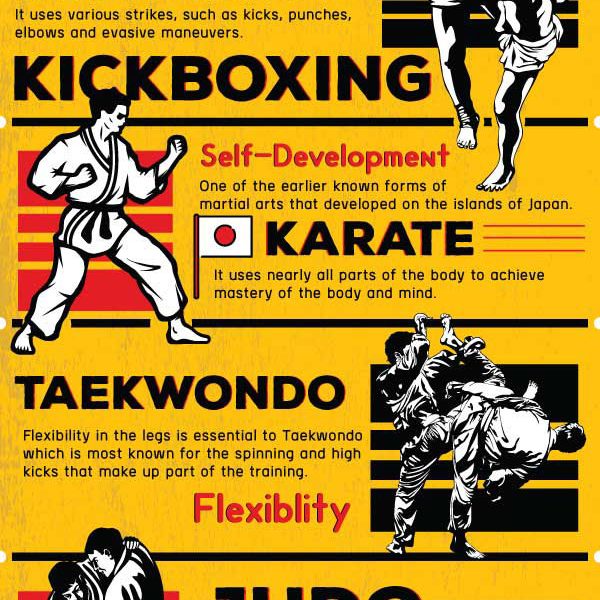The Background And Ideology Of Fighting Style: A Deep Dive
The Background And Ideology Of Fighting Style: A Deep Dive
Blog Article
Written By-Moesgaard Montoya
Enter the old world where martial arts were born out of necessity in diverse regions. Cultures crafted distinct fighting styles intertwined with historic contexts. Techniques progressed over centuries via devoted method and social exchanges. Today, modern martial arts blend traditional components for maximum effectiveness. Philosophically, martial arts stress self-control, self-improvement, and harmony. Regard, humility, and balance are foundational concepts directing practitioners in the direction of development and resilience. Explore the depths of this rich history and philosophy to reveal the profound influences forming this long-lasting technique.
Origins of Martial Arts
Fighting style came from different regions around the globe, progressing as practical combat systems to defend against threats. These ancient fighting styles were developed out of requirement, with each culture crafting techniques suited to their unique atmospheres and challenges. From the grappling arts of Jujutsu in Japan to the striking techniques of Kung Fu in China, martial arts were deeply intertwined with the historic, social, and cultural fabric of their particular cultures.
In Japan, the samurai class polished martial arts like Kenjutsu, the art of the sword, which later progressed into the much more promoted type of Kendo. On the other hand, in Brazil, Capoeira became a mix of dance and battle, developed by enslaved Africans as a way to withstand injustice. Each martial art brings with it a rich background and approach, reflecting the worths and ideas of individuals who practiced them.
As https://differentmartialartsforki32198.techionblog.com/27717409/embark-on-an-interesting-experience-right-into-the-world-of-martial-arts-where-the-blend-of-age-old-custom-mades-and-contemporary-performance-awaits delve into the origins of martial arts, you uncover a tapestry of human resourcefulness, durability, and the unyielding spirit of warriors throughout time.
Advancement of Methods
Via centuries of technique and improvement, battle strategies within different martial arts have gone through an extensive advancement. From ancient designs like Kung Fu and Karate to a lot more modern self-controls such as Brazilian Jiu-Jitsu and Krav Maga, the evolution of strategies has been driven by a combination of social influences, practical applications, and technological developments.
One substantial element of this advancement is the cross-pollination of methods between different martial arts. As an example, strategies from standard Japanese Jiu-Jitsu were included into the production of Judo by Jigoro Kano in the late 19th century. This blending of designs has resulted in the growth of crossbreed martial arts like Mixed Martial Arts (MIXED MARTIAL ARTS), which integrate elements of striking, grappling, and submission methods.
In view it , the advancement of strategies has been shaped by the enhancing emphasis on effectiveness and performance in battle. Practitioners have constantly looked for to refine their techniques with rigorous training, testing, and competition, leading to the growth of extremely specialized and reliable fighting designs. On the whole, the evolution of techniques in martial arts shows the vibrant nature of battle and the ongoing mission for improvement and advancement.
Thoughtful Structures
Exploring the underlying thoughtful concepts of martial arts offers understanding into their core worths and guiding ideas. At the heart of several martial arts techniques is the principle of self-control itself. By educating your mind and body to serve as one natural system, you cultivate discipline that extends past the dojo or health club into daily life. This self-control incorporates respect, humbleness, and self-discipline, shaping not just your physical capabilities however additionally your character.
An additional basic thoughtful foundation in martial arts is the concept of continual self-improvement. The journey of grasping a martial art is never-ending, with experts continuously aiming to far better themselves, both physically and emotionally. This concentrate on development fosters durability, determination, and a growth state of mind that can be related to all elements of life.
In addition, martial arts highlight the significance of harmony and equilibrium. Strategies are created to make use of an opponent's power versus them, highlighting the concept of generating and rerouting pressure instead of fulfilling it head-on. This philosophy extends to social connections, promoting peaceful resolutions and mutual understanding. By accepting these philosophical foundations, martial musicians not just enhance their battle skills but also cultivate a way of life fixated personal development, respect, and consistency.
Final thought
In conclusion, the background and philosophy of martial arts offer a rich tapestry of tradition, discipline, and self-improvement.
Take for example the story of Bruce Lee, that reinvented martial arts by blending various designs and ideologies to develop his own distinct form of Jeet Kune Do.
Via devotion and advancement, martial musicians continue to press borders and influence others to reach their full capacity both in battle and in life.
